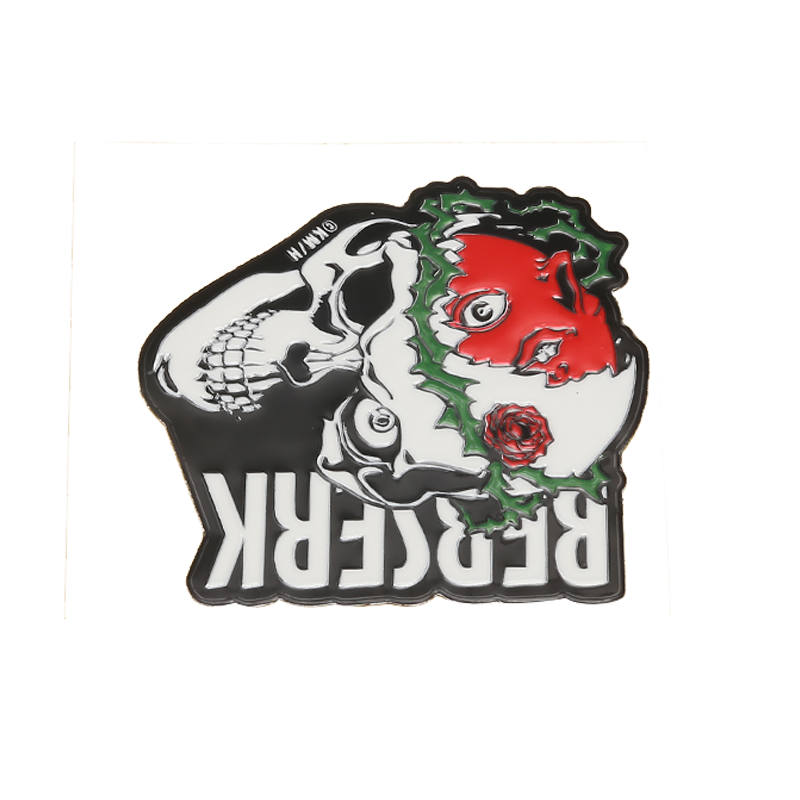2025-05-09
Understanding the Outdoor Performance of ABS Materials
A growing number of brands are using customized logos to enhance the visual appeal of products, signage, and equipment used in outdoor environments. Among the popular options, the ABS Embossed Logo stands out due to its lightweight structure, design flexibility, and cost-effectiveness. However, one critical question remains: can it meet the durability standards required for prolonged exposure to sunlight, rain, temperature changes, and other environmental challenges?
Acrylonitrile Butadiene Styrene (ABS) is known for its strong impact resistance and rigidity. While these qualities make it a reliable base material for molded logos, ABS by itself is not inherently UV-resistant or waterproof. As a result, the base material typically needs surface treatment or additives to enhance its outdoor performance.

Surface Coating and UV Protection
To improve weather resistance, manufacturers often apply a protective surface coating on the ABS Embossed Logo. This coating acts as a barrier against ultraviolet (UV) rays, which are known to cause color fading, brittleness, or surface degradation over time. UV-resistant lacquers, chrome plating, or even dual-layer paints are commonly used, ensuring that the logo retains its color and texture even after prolonged sun exposure.
These treatments not only guard against sunlight but also help protect against moisture, dust, and pollution, common elements in outdoor environments. In some applications, clear polyurethane or acrylic layers are added to increase hardness and shield the logo from scratches and environmental wear.
Thermal Stability and Climate Considerations
Outdoor use also subjects materials to temperature fluctuations, from cold to hot weather. While ABS has a moderate heat resistance (typically up to 80°C or 176°F), this can be sufficient for temperate outdoor conditions. For high-heat regions or industrial environments, enhanced formulations of ABS—sometimes blended with other polymers—can be used to improve performance without compromising the embossed detail.
It's important to note that thermal expansion and contraction can impact long-term adhesion. To counter this, industrial adhesives or mechanical fastening methods are employed to ensure the logo remains securely attached to the intended surface over time.
Water Resistance and Humidity Tolerance
Although ABS is not fully waterproof, it is naturally moisture-resistant. When properly coated or sealed, the ABS Embossed Logo performs well in humid, rainy, or coastal environments. The surface treatments help prevent water absorption that could otherwise cause swelling, deformation, or surface peeling. In addition, many logos are designed with sloped or rounded contours that prevent water pooling and allow for quick runoff, which further enhances weather durability.
Field Testing and Industry Validation
Reliable manufacturers do not rely solely on theoretical performance—they conduct field tests and simulations to validate how well the ABS Embossed Logo handles real-world outdoor conditions. These tests may include UV exposure chambers, salt spray corrosion tests, and thermal cycling. Positive performance results from these trials confirm that the treated logos meet the demands of outdoor signage, automotive badging, garden equipment, and more.
Conclusion
While raw ABS may have limitations in outdoor applications, the modern ABS Embossed Logo, when enhanced with UV protection, weatherproof coatings, and thoughtful installation techniques, can meet the requirements for outdoor durability. With proper engineering and surface treatment, these logos offer a cost-efficient and attractive solution for brands seeking long-term visibility in exterior environments.